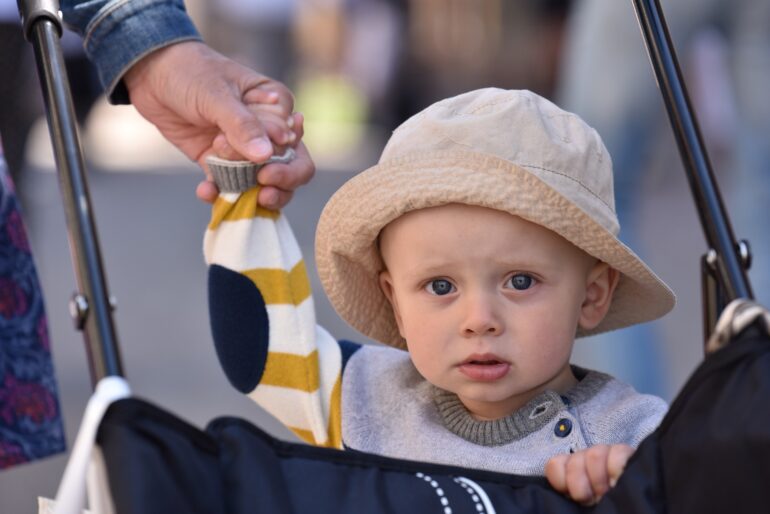TL;DR:
- Researchers employ machine learning and eye-tracking to detect Autism Spectrum Disorder (ASD) in children.
- Early detection of ASD is critical for effective intervention.
- Eye movement patterns in response to social stimuli offer potential for early diagnosis.
- The study used cartoon interactions and real-life scenarios for assessment.
- Results show promising accuracy in diagnosing ASD through gaze behavior.
- Children with ASD exhibit a preference for cartoon faces, possibly due to reduced need for social interaction.
Main AI News:
In a groundbreaking study recently unveiled in the prestigious Frontiers in Neuroscience journal, researchers have unveiled an innovative method for detecting Autism Spectrum Disorder (ASD) in children at an early stage. Leveraging the power of cutting-edge machine learning technology, this pioneering approach analyzes eye movement data during interactions with both real and artificial faces.
The Crucial Need for Early Detection and Treatment
ASD, a complex social condition characterized by communication challenges and compulsive behaviors, necessitates early identification and intervention. In this quest, the fusion of machine learning algorithms and eye-tracking technology has emerged as a vital tool for early screening and diagnosis. Studies have demonstrated that in individuals with ASD, their gaze towards socially significant stimuli exhibits distinctive patterns, offering the tantalizing prospect of achieving an early, objective diagnosis.
A Glimpse into the Study
In this pivotal study, considering atypical gaze behaviors and developmental delays as early indicators of ASD, researchers explored the effectiveness of seemingly simple social stimuli, such as cartoon interactions, for early ASD screening. The study involved the evaluation of children aged 12 to 60 months, comparing those with ASD and typically developing (TD) children through eye-tracking tests featuring both animated characters and real individuals.
The collected data from the eye-tracking assessments were meticulously analyzed using a sophisticated three-level hierarchical framework, encompassing individuals, events, and areas of interest. Feature selection was accomplished through Random Forest (RF) classifiers, with diagnostic data and flattened vectors serving as labels and features. Logistic regression modeling was then employed to decipher the influence of key characteristics. Furthermore, the Gesell Development Scale (GDS) was employed to evaluate children’s developmental progress.
Rigorous Selection Criteria and Methodology
It’s essential to note that the study’s analysis exclusively included individuals meeting the Autism Diagnostic Observation Schedule (ADOS) and the Diagnostic and Statistical Manual of Mental Disorders, Fifth Edition (DSM-V) criteria for ASD diagnosis. Furthermore, only those with normal hearing and vision, enabling them to participate in eye movement evaluations, were considered. Individuals with other psychiatric conditions and concerns related to physical health were meticulously excluded from the study.
The Stimuli and Their Impact
The study utilized eight silent videos for the eye-tracking assessments, divided into two segments. One side featured animated characters engaging in various activities, including nodding, dancing, scratching their necks, blowing kisses, jumping, clapping hands, and more. On the other side, real individuals impersonated the actions of the cartoon characters. Careful attention was paid to ensuring that the attire and movements of the animated characters closely matched those of the real humans, ensuring a valid comparison.
In this context, “fixation” referred to clusters of gaze locations in both time (60 ms) and space, while “gaze” denoted non-saccadic eye movement, and “fixation” indicated the absence of such movement.
Revealing Insights from the Study
The study encompassed 161 children, with 44 falling within the typically developing group and 117 diagnosed with ASD. The average age of the participants was 40 months, with 47 being female. A split of 70% for training and 30% for testing was employed in data utilization. Notably, the ASD group exhibited a younger age and significantly lower GDS scores compared to the TD group.
The study achieved commendable values for recall, precision, and accuracy, all standing at 0.7, with an impressive area under the curve (AUC) value of 0.8. Notably, attention to human-related features positively correlated with ASD diagnosis, whereas fixation on cartoon stimuli exhibited a negative correlation.
Uncovering Key Findings
Among the noteworthy findings, the study revealed that head glance duration and revisitation of body movements during specific cartoon activities, such as clapping hands and scratching necks, were negatively associated with ASD. Similarly, children’s focus on people during dancing activities was negatively linked to ASD.
Conversely, the time spent fixating on people during their dance routines, the duration of fixation on cartoon characters when they blew kisses, and the swiftness of saccadic eye movements were traits that displayed favorable connections with ASD diagnosis.
Additionally, the study unearthed the intriguing fact that children with ASD exhibited a stronger affinity for cartoon faces compared to their typically developing counterparts. This predilection for cartoons might be linked to a reduced need for social contact, shedding light on the commonality of autism spectrum disorders in processing cartoon characters and its potential implications for social interaction skills.
Conclusion:
This innovative approach, combining machine learning and eye-tracking techniques, holds tremendous promise for the market. It signifies a shift towards more accurate and early ASD diagnosis, which could lead to increased demand for such diagnostic tools in the healthcare industry. Additionally, the insight that children with ASD favor cartoon characters suggests potential opportunities to develop specialized educational and therapeutic resources, catering to this preference and improving overall outcomes for ASD-affected individuals. This breakthrough could significantly impact both the medical and educational sectors.

